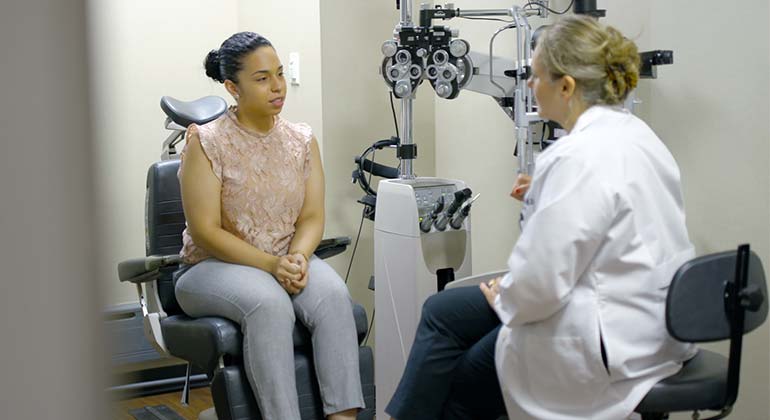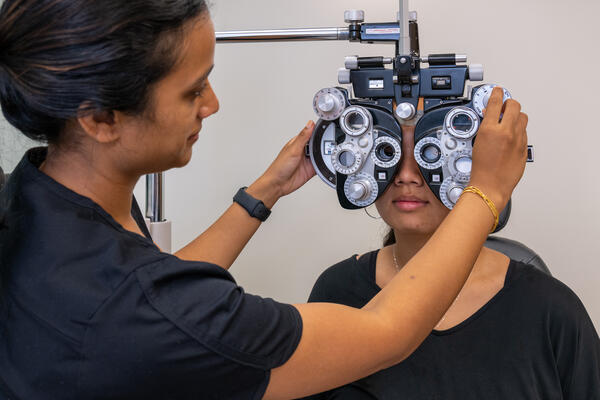Neurologist in Andalusia: Leading Specialists and Clinics Noted
Wiki Article
The Benefits And Drawbacks of Different Refractive Surgical Treatments for Enhanced Eyecare

LASIK Surgical Procedure
LASIK surgery is a typically performed refractive procedure that intends to deal with vision issues such as astigmatism, farsightedness, and nearsightedness. This medical technique has gained popularity due to its efficiency in offering patients with more clear vision and minimizing their dependency on glasses or call lenses. Throughout the treatment, a slim flap is produced on the cornea, and a laser is utilized to reshape the underlying cells, correcting the refractive mistake. The flap is after that repositioned, enabling quick healing and marginal discomfort for the person.One of the main advantages of LASIK surgical procedure is the rapid improvement in vision experienced by numerous clients. Many people observe a substantial improvement in their eyesight quickly after the treatment, with minimal downtime needed for recovery. Additionally, LASIK is known for its high success price and reduced occurrence of problems when done by proficient cosmetic surgeons. Like any medical treatment, LASIK likewise carries some risks, consisting of dry eyes, glow, halos, and under or overcorrection of vision. It is essential for individuals considering LASIK surgical procedure to undergo an extensive examination by an eye treatment specialist to establish if they appropriate candidates for the treatment.
PRK Procedure
The PRK procedure, also referred to as Photorefractive Keratectomy, is a type of refractive surgical procedure that intends to deal with vision concerns similar to LASIK surgical procedure. Unlike LASIK, which includes producing a flap in the cornea, PRK works on the surface layer of the cornea. During the PRK procedure, the external layer of the cornea, called the epithelium, is gotten rid of to enable reshaping of the underlying corneal cells with an excimer laser. This reshaping helps to deal with refractive mistakes such as farsightedness, astigmatism, and nearsightedness.One of the advantages of PRK over LASIK is that it removes the danger of flap-related problems because no flap is created throughout the surgical procedure. This can be beneficial for individuals with thin corneas or those included in contact sporting activities where eye trauma is an opportunity. However, the healing time for PRK is commonly longer compared to LASIK, as the outer layer of the cornea needs time to regenerate after the procedure. Regardless of the longer healing period, PRK can be a suitable alternative for individuals looking for vision adjustment surgical procedure.
SMILE Surgery
An innovative refractive surgical treatment strategy gaining popularity in the area of ophthalmology is SMILE Surgery. Small Incision Lenticule Removal (SMILE) is a minimally intrusive treatment that fixes vision by improving the cornea utilizing a femtosecond laser. Unlike conventional LASIK surgery, SMILE Surgical procedure involves producing a tiny cut in the cornea to remove a lenticule, which results in much less interruption to the corneal structure and potentially faster healing times.One of the key advantages of SMILE Surgical procedure is its capacity to treat myopia (nearsightedness) and astigmatism with high accuracy, resulting in superb visual outcomes for individuals. The minimally intrusive nature of the treatment additionally decreases the risk of difficulties such as completely dry eye syndrome, making it a beneficial alternative for individuals looking for refractive surgical procedure.

LASEK Technique
Having actually explored the benefits and factors to consider of SMILE Surgical treatment, another significant refractive surgical treatment technique worth checking out is the LASEK Strategy. LASEK, which represents Laser-Assisted Subepithelial Keratectomy, is a type of laser eye surgical procedure that aims to remedy refractive mistakes such as myopia (nearsightedness), hyperopia (farsightedness), and astigmatism.Unlike LASIK, LASEK does not entail producing a corneal flap. Instead, throughout a LASEK treatment, the doctor makes use of a diluted alcohol solution to loosen up the slim external layer of the cornea, understood as the epithelium.
One of the main benefits of LASEK is that it can be ideal for people with slim corneas who might not be excellent prospects for LASIK. Additionally, LASEK generally leads to minimal post-operative discomfort and a quicker recovery time contrasted to PRK. However, the aesthetic healing procedure with LASEK might be somewhat longer than with LASIK.
Implantable Get In Touch With Lenses
Implantable Call Lenses supply a long-lasting vision correction solution for individuals looking for an option to typical get in touch with lenses or glasses. These lenses, also recognized as phakic intraocular lenses, are operatively placed into the eye to remedy refractive mistakes such as nearsightedness (nearsightedness), hyperopia (farsightedness), and astigmatism. neurologist Andalusia. Unlike conventional call lenses that rest on the surface area of the eye, implantable call lenses function within the eye itself, giving clear vision without the requirement for everyday maintenance or removal
Among the key advantages of implantable contact lenses is their permanence. When placed, they can remain in the eye forever, supplying regular and secure vision adjustment. In addition, these lenses can be an excellent option for people who are bad prospects for laser eye surgical procedure or who favor a relatively easy to fix vision adjustment treatment.
Nonetheless, implantable contact lenses do bring some risks, including the capacity for cataracts or increased eye pressure. It is critical for people considering this option to seek advice from an eye treatment professional to figure out if implantable call lenses are the best selection for their particular demands and eye wellness.
Final Thought
In final thought, each kind of refractive surgical procedure has its own advantages and downsides. LASIK surgical procedure is preferred for its quick recuperation time, while PRK procedure might be ideal for individuals with slim corneas. SMILE surgical procedure supplies very little discomfort during the treatment, however LASEK technique might have a longer recovery procedure. Implantable call lenses supply a choice for those who are not appropriate candidates for typical surgical treatments. Clients must seek advice from with their eye care service provider to figure out the ideal choice for their specific needs.
Overall, SMILE Surgical treatment offers an encouraging option for individuals looking to improve their vision via refractive surgery.
Report this wiki page